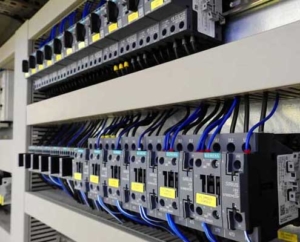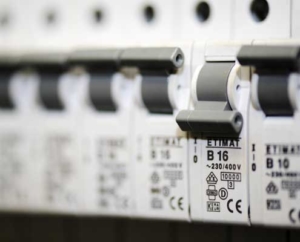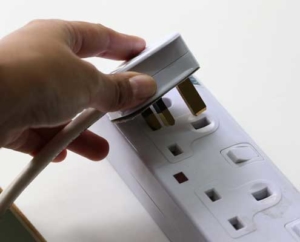What is an RCD & why do you need them?
In electrical safety, one crucial device that ensures electrical safety is the Residual Current Device (RCD). An RCD is designed to protect individuals, employees, tradespeople, and anyone from electric shock. In addition, they are a large part of preventing electrical fires.
In this EIS blog article, we will explore the functions and benefits of an RCD, furthermore, why they can be an essential component in many electrical installations.
We cover the full range of Circuit Breakers in this article, “What are Circuit Breakers.”
What does an RCD do?
Firstly, to understand the significance of an RCD, we need first to grasp its fundamental purpose.
The function of an RCD breaker is to monitor the flow of electrical current on that circuit continuously.
The design and manufacturer of that specific unit are designed to detect even the most minor leakage of current that could occur. This leakage could be due to faults, damage, water or accidental contact with live wires.
When an RCD detects current leakage, it rapidly cuts off the power supply, preventing potential harm to individuals and mitigating the risk of electrical fires.
What are the main functions of an RCD?
They protect against electrical shock.
One of the primary functions of an RCD is to protect against electric shock. Thus, in the event of a fault, an RCD detects the change in current flow and immediately trips the RCD unit. Consequently, cutting off the power supply to the circuit. In essence, there is no flow of electricity from the main fuse board out along that circuit once the RCD “Trips.”
This fast response time, typically within milliseconds, can save lives by preventing a dangerous electric shock.
They protect against electrical fires.
Another critical role of an RCD is to safeguard against electrical fires. Faults in electrical appliances or wiring can lead to overheating, which can potentially cause a fire. These faults are especially prevalent in residential settings.
In this scenario, an RCD detects faults by monitoring the balance between the live and neutral currents. If an imbalance indicates a problem, the RCD quickly interrupts the power supply. Therefore, by not allowing continuous current to a faulty device, a device’s overheating heating or explosion is avoided. Therefore, mitigating the risk of that potential electrical.
Benefits of an RCD?
Peace of Mind
As discussed above, an RCD has many life-saving functions. However, it also provides peace of mind for homeowners and occupants. This peace of mind is because we can be more content in our homes when we significantly reduce the risk of electric shock and electrical fires. Furthermore, when renting out a property, knowing your tenants are safe
This increased level of safety can enhance the overall well-being of individuals. Imagine the difference when having a family and you have constant electrical issues. You should always have confidence and trust in your electrical installations.
Additional Protection
In addition to newly installed individual circuits, an RCD device can be installed as an additional protective device in existing electrical circuits.
It is typically placed in the main distribution board or consumer unit and can protect multiple circuits simultaneously.
Installing an RCD does not require extensive electrical rewiring or significant modifications to the electrical system. In fact, at EIS, we come across a lot of fuse board upgrade work, especially in older buildings.
Sometimes the upgrade of just the breakers to RCD is a cost-effective solution rather than a total rewire
RCD Requirements
Requirements for RCD Protection in the 18th Edition Wiring Regulations – https://electrical.theiet.org/bs-7671/18th-edition-resources/
There are specific requirements for the use of RCDs. According to the 18th Edition of the Wiring Regulations
- An RCD protection must be provided for socket outlets rated up to 32A . This is tin locations to include kitchens, bathrooms, and outdoor areas.
- Use RCD protection for all circuits supplying luminaires.
- For all circuits supplying portable equipment that will be used outdoors, your electrician must install RCD protection
- A qualified electrical installer such as EIS must be used to correctly install RCDs and thoroughly test
Types of RCD
It is worth noting that different types of RCDs are available to suit various applications.
Fixed RCD’s
The most common types include fixed RCDs. These are permanently connected to the circuit. In essence, these are installed on your main fuse board and protect the whole circuit at the fuse board.
Portable RCD’s
A portable RCD is a unit which can be plugged into an electrical socket . In addition, power sockets are now commonly pre-installed with an RCD in the faceplate to protect that socket at the source. Additionally, there are different sensitivity levels of RCDs. Thus, to cater for various requirements. Such as providing additional protection in high-risk areas or for specific equipment.
RCD Categories
Residual current devices are classified into different categories. These are Type AC, Type A and Type B
They operate in the following way
Type A
This type ensures that the breaker trips for:
- Residual AC currents
- Pulsating DC currents
Type AC
This type ensures that the breaker trips for:
- Residual AC currents
Type
This type ensures that the breaker trips for:
- Residual AC currents
- Pulsating DC currents
- Smooth DC currents.
Summary
In conclusion, an RCD is a vital safety device. Firstly, it plays a crucial role in protecting individuals and preventing electrical fires.
Secondly, an RCD can detect current leakage and quickly interrupt the power supply. Thus, they significantly reduce the risk of electric shock. Furthermore, it enhances overall electrical safety.
Lastly, Its ease of installation, cost-effectiveness, and versatility make it an essential component in electrical installations.
Incorporating RCDs into our electrical systems can create a safer environment and provide reliable protection against electrical hazards.
For additional electrical articles please visit our main BLOG page here





